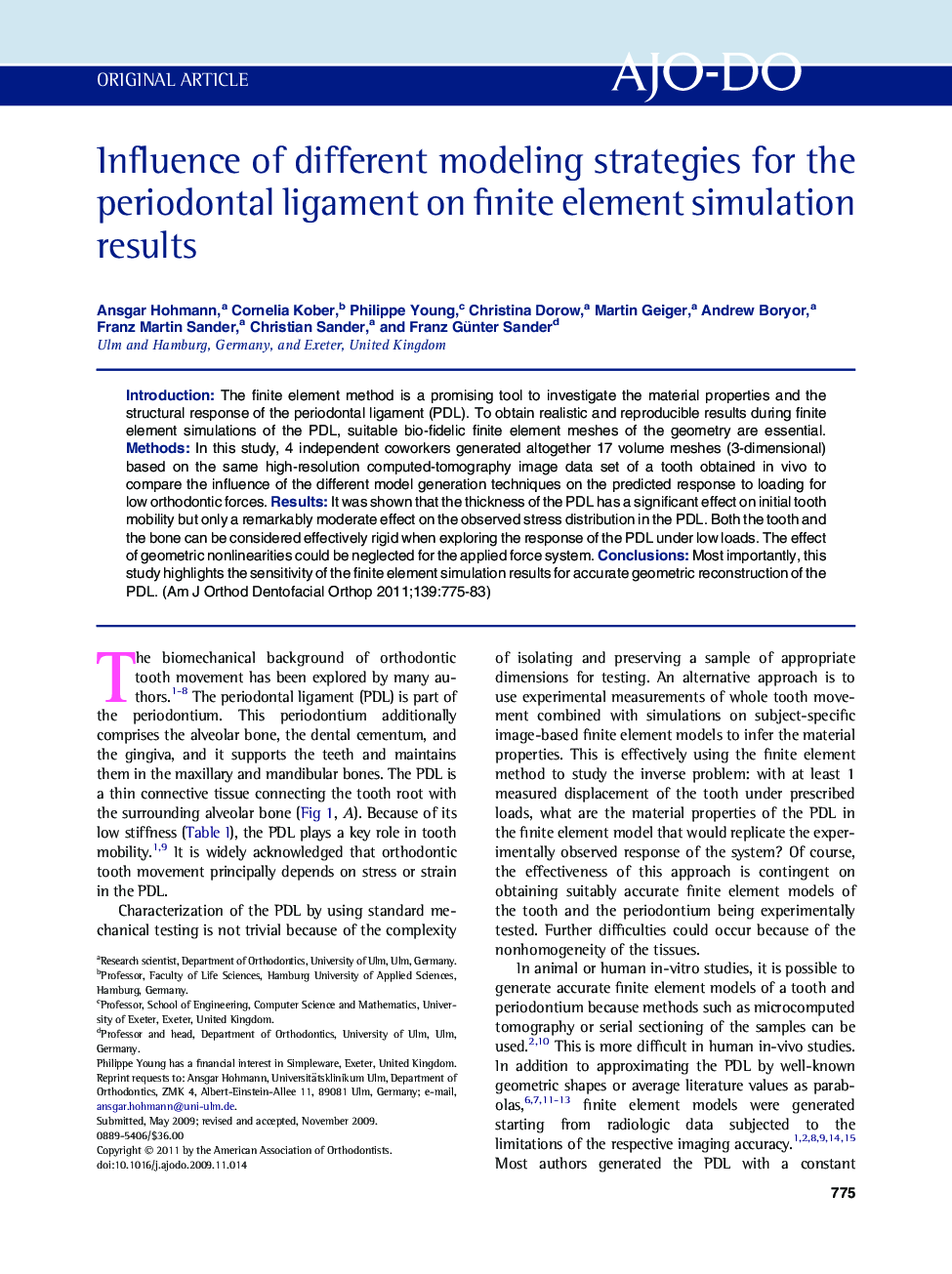| Article ID | Journal | Published Year | Pages | File Type |
|---|---|---|---|---|
| 3117249 | American Journal of Orthodontics and Dentofacial Orthopedics | 2011 | 9 Pages |
IntroductionThe finite element method is a promising tool to investigate the material properties and the structural response of the periodontal ligament (PDL). To obtain realistic and reproducible results during finite element simulations of the PDL, suitable bio-fidelic finite element meshes of the geometry are essential.MethodsIn this study, 4 independent coworkers generated altogether 17 volume meshes (3-dimensional) based on the same high-resolution computed-tomography image data set of a tooth obtained in vivo to compare the influence of the different model generation techniques on the predicted response to loading for low orthodontic forces.ResultsIt was shown that the thickness of the PDL has a significant effect on initial tooth mobility but only a remarkably moderate effect on the observed stress distribution in the PDL. Both the tooth and the bone can be considered effectively rigid when exploring the response of the PDL under low loads. The effect of geometric nonlinearities could be neglected for the applied force system.ConclusionsMost importantly, this study highlights the sensitivity of the finite element simulation results for accurate geometric reconstruction of the PDL.
